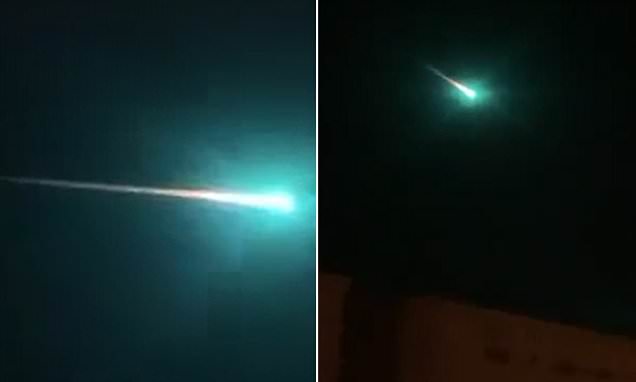
Mysterious green glow seen shooting across Australian night sky
Australian skywatchers have been treated to a stunning show by what astronomers believe was a distant asteroid.Residents from across Australia shared vision to social media of the object streaking across the sky on Sunday night, creating a green glow.West Australian woman Shaz Hussien captured video of the object flying across the night sky. 'What the f***!?' she could be heard exclaiming as she filmed. 'That's a f****** asteroid,' a stunned man was heard saying in the background. Residents were left stunned after a mysterious green glow (pictured) lit up the night sky on Sunday evening His assessment was probably right - astronomers believe the object was Asteroid 2002 NN4 which was passing Earth on Sunday, Nine News reported. The asteroid, around 570 metres wide, was an estimated 5.2 million kilometres from Earth, but still created a spectacular light show. Mason Vearing also filmed the asteroid, making the same exclamation as the West Australian woman, while a female companion could be heard saying 'that is the coolest thing.' The asteroid was seen from Victoria to Western Australia and it created a stunning green glow in the sky as it passed by (pictured)A number of other people took to social media to share their own experience. 'It was truly amazing to see, I saw it around midnight last night,' one user wrote. 'Saw this at work as well but it seemed more colourful and brighter where I saw it,' another added. NASA had identified 958,703 asteroids, and said impacts with Earth can be expected every 200-300 years. 'Asteroids range in size from Vesta, the largest at about 530 kilometers in diameter, to bodies that are less than 10 meters across.,' a NASA statement read.'The total mass of all the asteroids combined is less than that of Earth's Moon.' The current asteroid count according to NASA stands at 958,703, but an impact with the earth happens on average every two to three hundred years
……Read full article on Daily Mail
Space Australia
Comments
Leave a comment in Nestia App